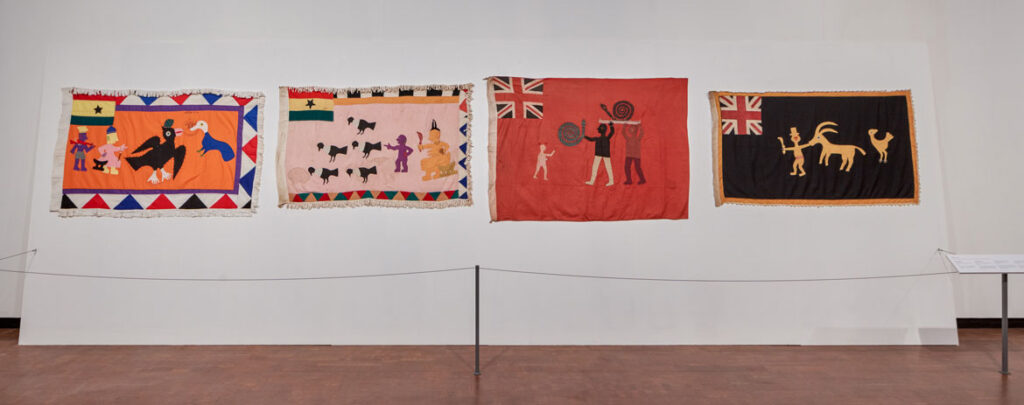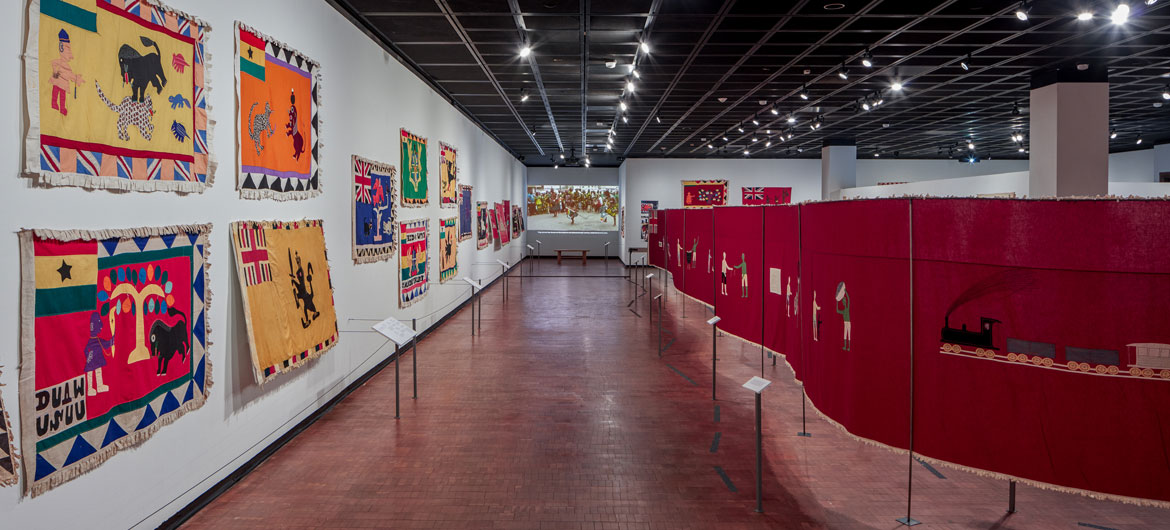The flags depict vultures and warships, trains and witches, eagles and dogs and dragons. They are the traditional banners of battle and ritual of the Asafo, militia companies of the Fante people of Ghana, a subgroup of the Akan, the largest multiethnic group in the West African country.
They’re showcased in “Art, Honor, and Ridicule: Fante Asafo Flags from Southern Ghana” at the Fowler Museum at UCLA in Los Angeles from Oct. 23, 2022, to Feb. 12, 2023. Co-curated by Silvia Forni of Toronto’s Royal Ontario Museum and the Fowler’s Erica P. Jones, the exhibition of 46 flags from the 20th century is drawn exclusively from the Fowler collection.
Afaso—said to translate as war people—have served as military defenders, police, social and cultural groups. They have managed roadworks and sanitation projects, and provided music and entertainment.
Traditionally the flags flap on poles above shrines and nearby homes, they’re used in funerals or for the installment of matrilineal kings. They are carried in marches and parades and spun and snapped by dancers accompanied by drums, singing, trumpets and other percussion reenacting their group’s battle victories.
Most Fante Asafo flags are about 3 by 5 feet appliqué patchworks of fabrics imported from Europe, but some banners reach 300 feet long, for display outside posuban (shrines) or for carrying in processions that snake through the streets. (The exhibition includes one 100-foot long example.)
Elephants, palm trees, and other flag imagery symbolize proverbs and victorious battles and other historical events. The symbolism often boasts of fierceness or taunts rivals. Lions, eagles, dragons, the British Union Jack, modern boats, trains and airplanes speak of colonial European influences—as conquerors (the British controlled the region from the 1870s until independence in 1957), as trading partners, as military allies. The flags were also symbols of protest against colonial rule.
During community ritual flag performances, the Fowler says, “flag dancers flaunt, throw, and roll flags in a choreography that evokes pride and boastfulness, a nod to battlefields of the past wherein companies were in frequent conflict with outsiders and with one another. Today, contemporary asafo companies compete against one another for bragging rights in energetic dance battles grounded in art, honor, and ridicule.”
If this is the kind of coverage of arts, cultures and activisms you appreciate, please support Wonderland by contributing to Wonderland on Patreon. And sign up for our free, occasional newsletter so that you don’t miss any of our reporting. (All content ©Greg Cook 2023 or the respective creators.)
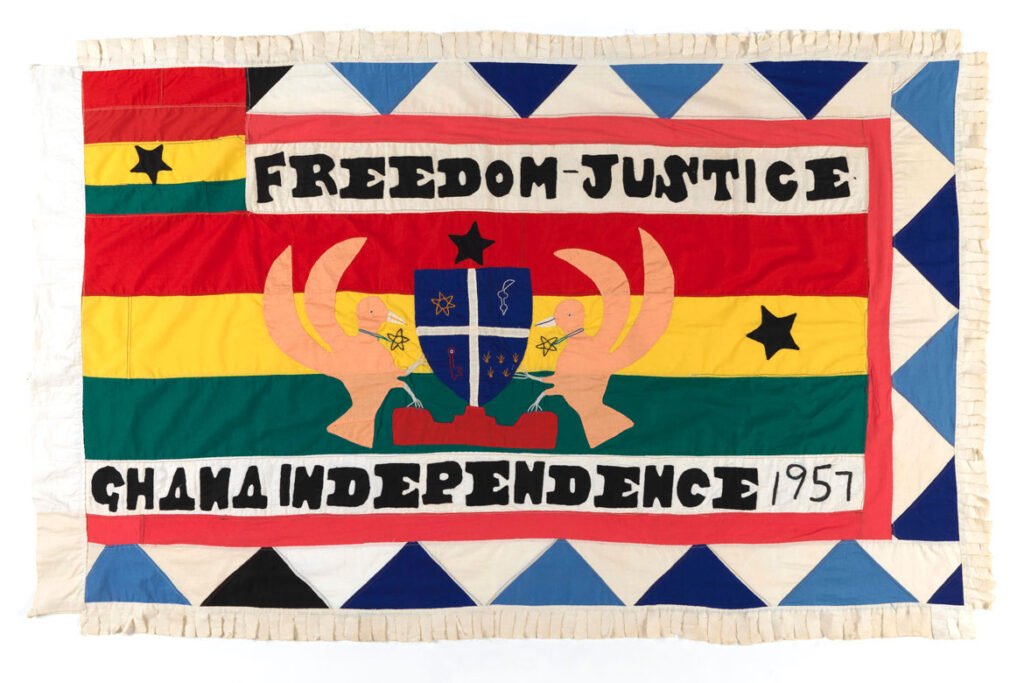
In another interpretation of the Ghanaian state arms, with their prominent inclusion of eagles, the artist has intensified the connection to the state by turning the background into the Ghanaian flag, simultaneously calling attention to the year 1957, when Ghana gained independence.
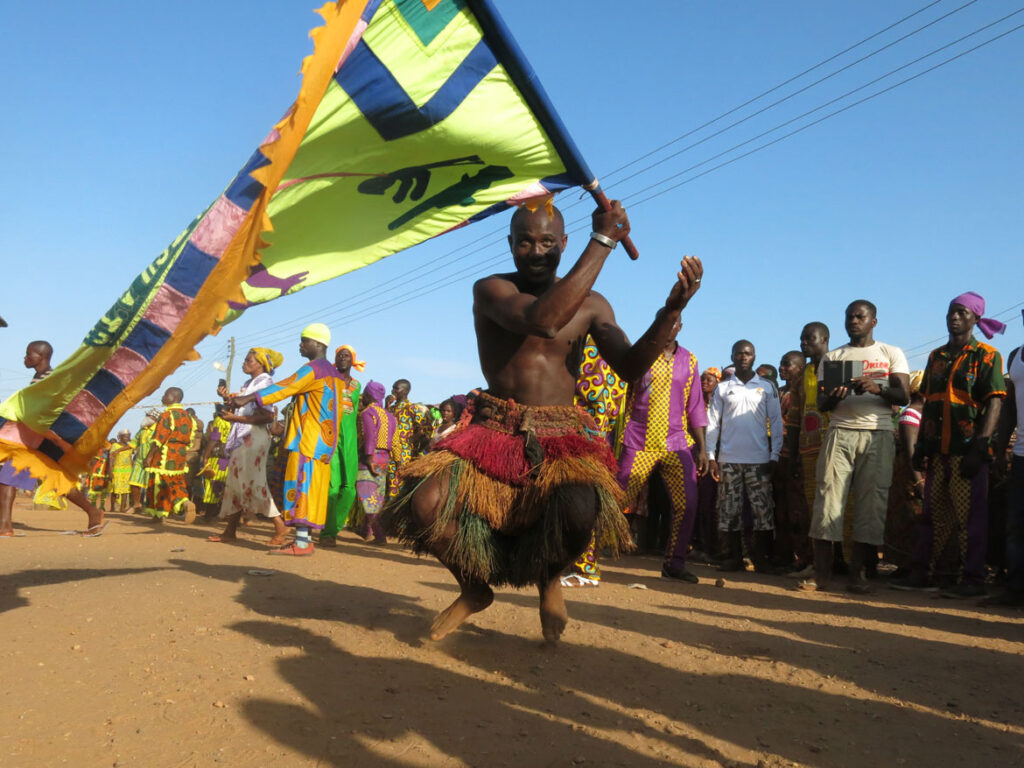
Flags are always carried into the performance space by specialized flag bearers who dance with the flags while guarded by members carrying muskets. The moves of the flag dancers are also another clear reference to the battlefield.
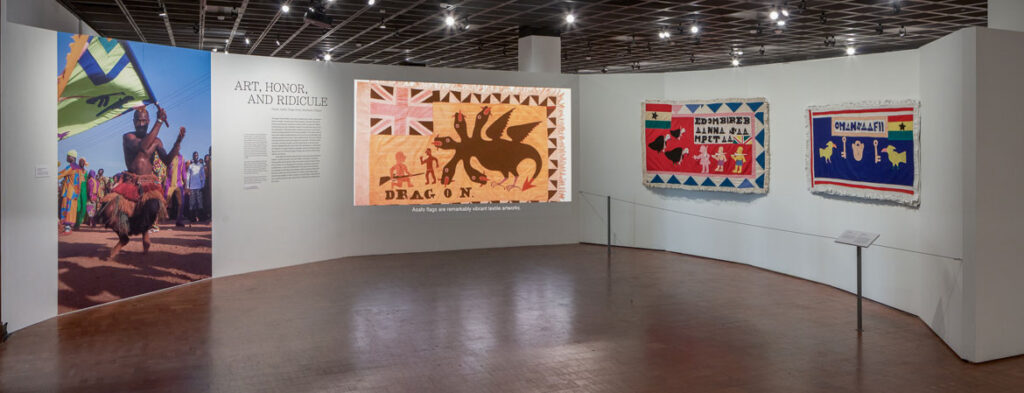
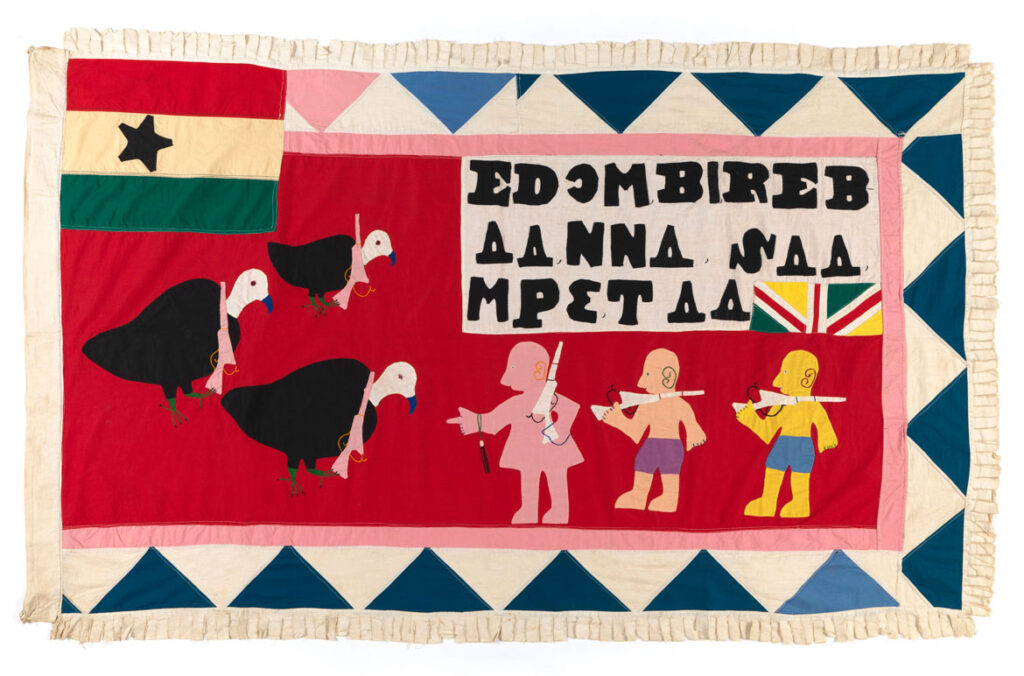
Coded messages demeaning rival companies are key components of many flags. This one uses vultures to insult the rivals of Nkrum No. 2 Company. As carron birds that eat dead animals, vultures are seen as obnoxious and unsavory. Three men with guns face off against a group of birds also carrying guns, insinuating that their rivals are as objectionable as vultures.
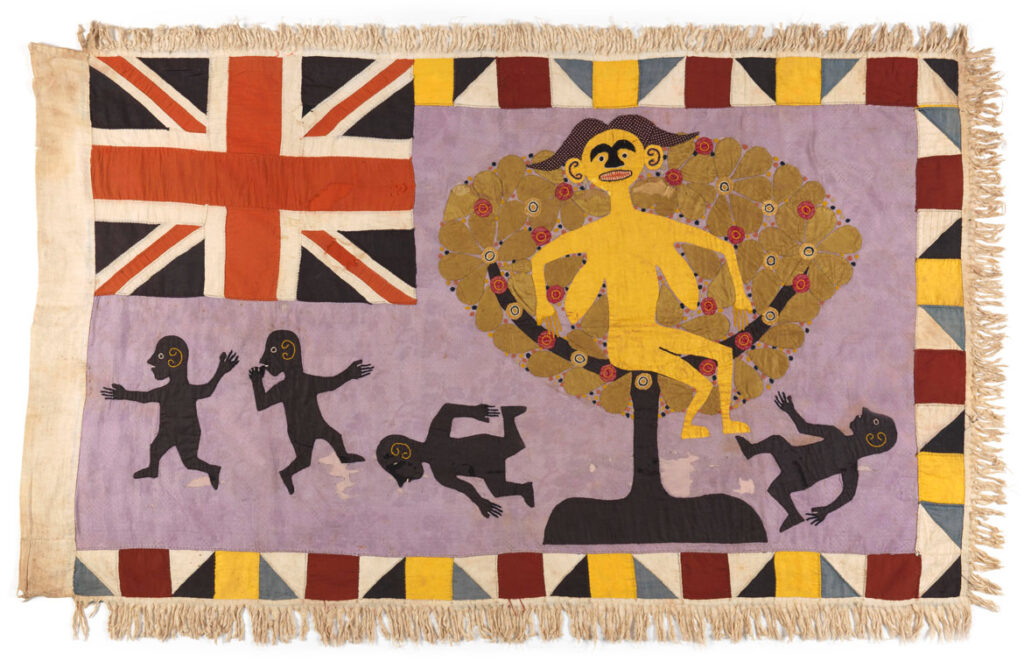
The presence of two fallen figures beneath a female figure in a tree is an indication that this
is a representation of a sasabonsam, or a type of evil figure or dragon. This motif testifies to
the often racist and sexist overtones of beliefs about and discussions of witches. Metaphors of wickedness and accusations of witchcraft are often employed to attack women who transgress boundaries prescribed for wives and mothers.
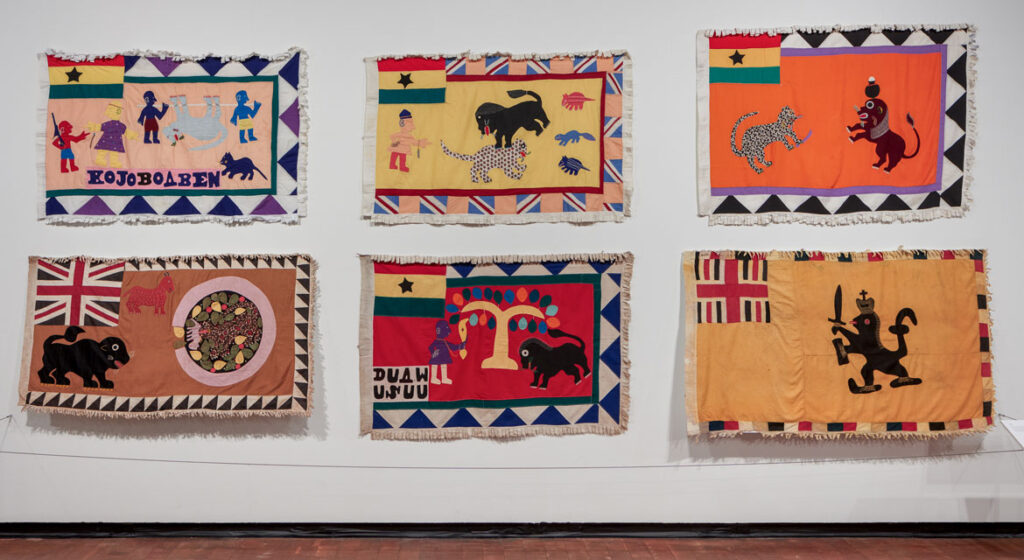
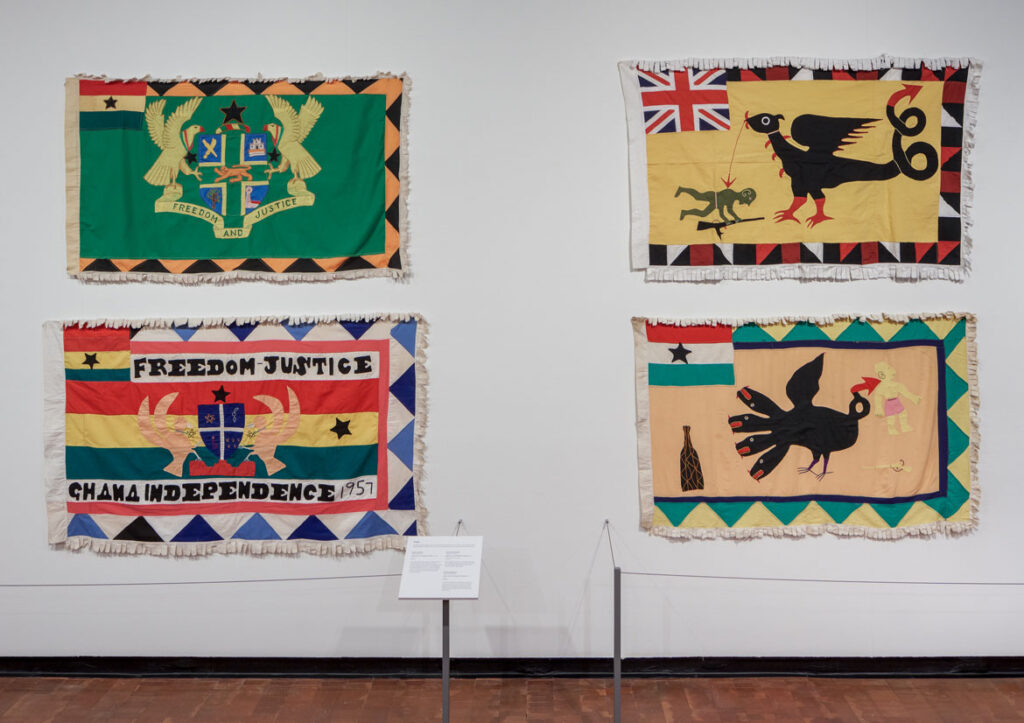
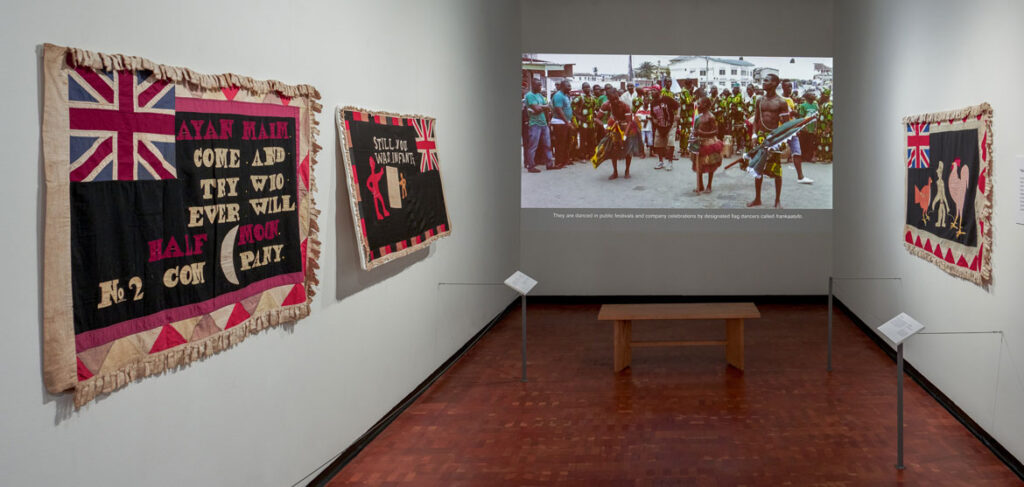
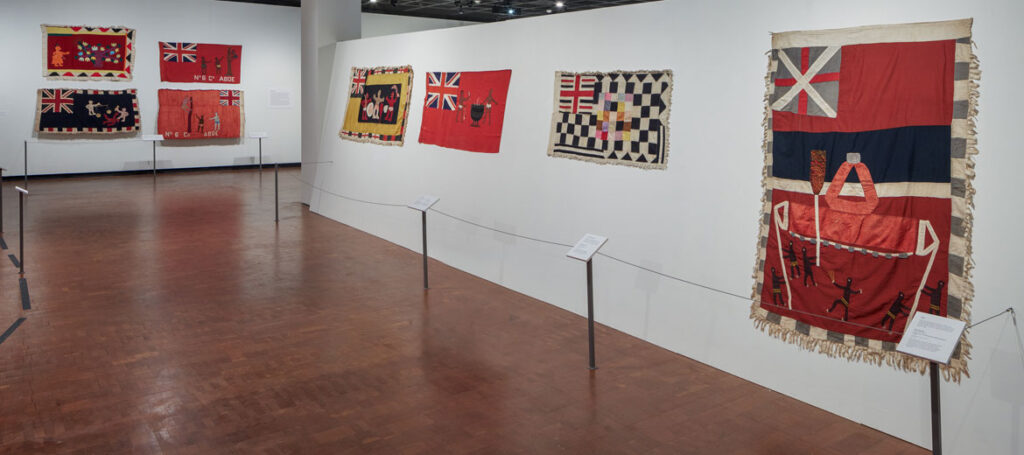

The first railway from Secondi to Tarkwa opened in 1901, extending to the gold mining town of Obuasi in 1902, and to Kumasi in 1903. Other rail lines followed elsewhere in Ghana. Although the railway system is currently in serious decline, the train itself remains a symbol of strength and invincibility.
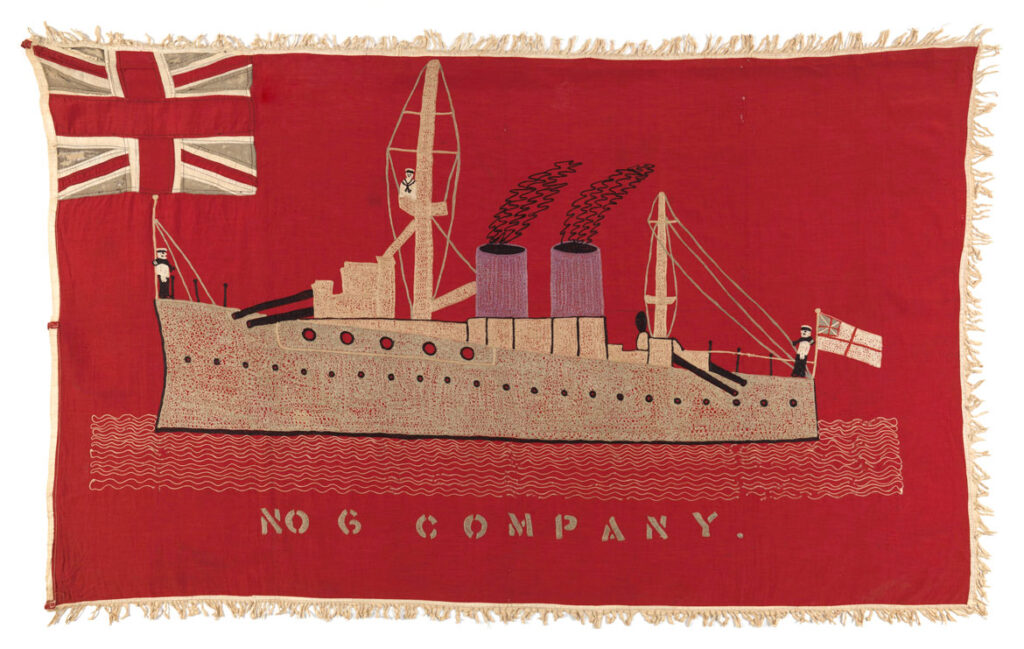
War ships became a common motif on asafo flags after World War I, serving as a statement about dominance of a company in their region. As Supi R. M. P. Baiden of Kyirem No. 6 Company has said, “We control the ocean, we control the seas around our town.”
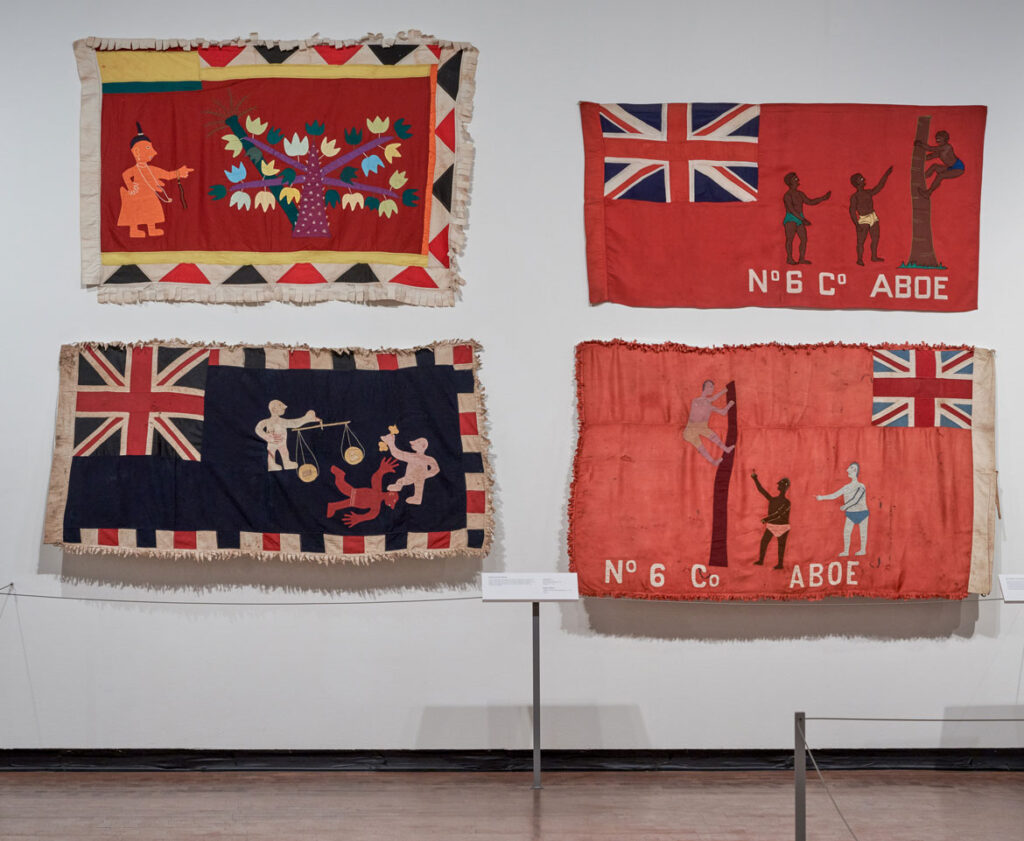
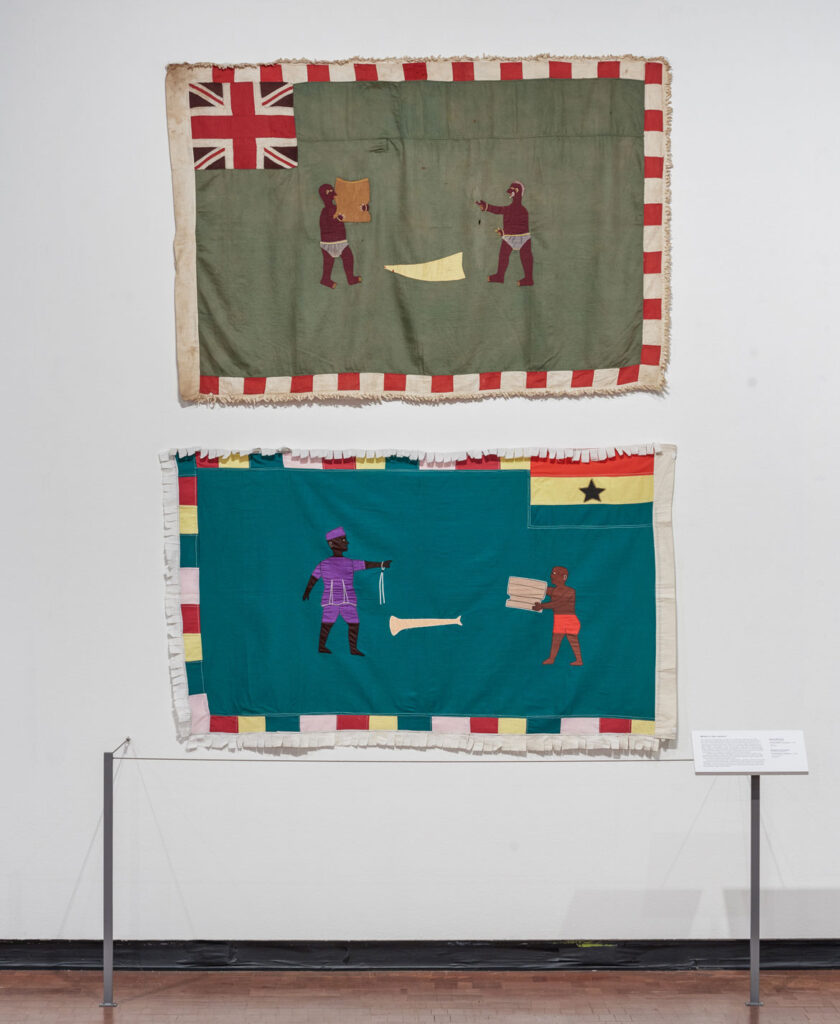
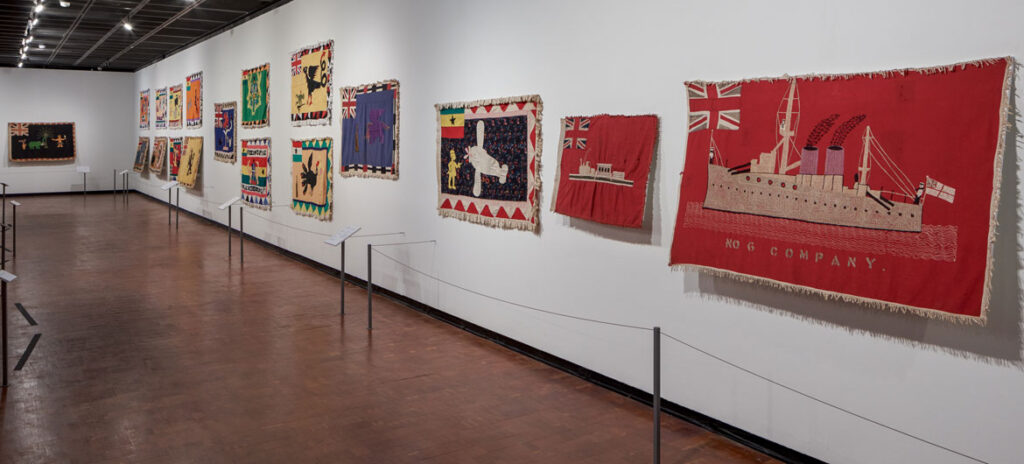
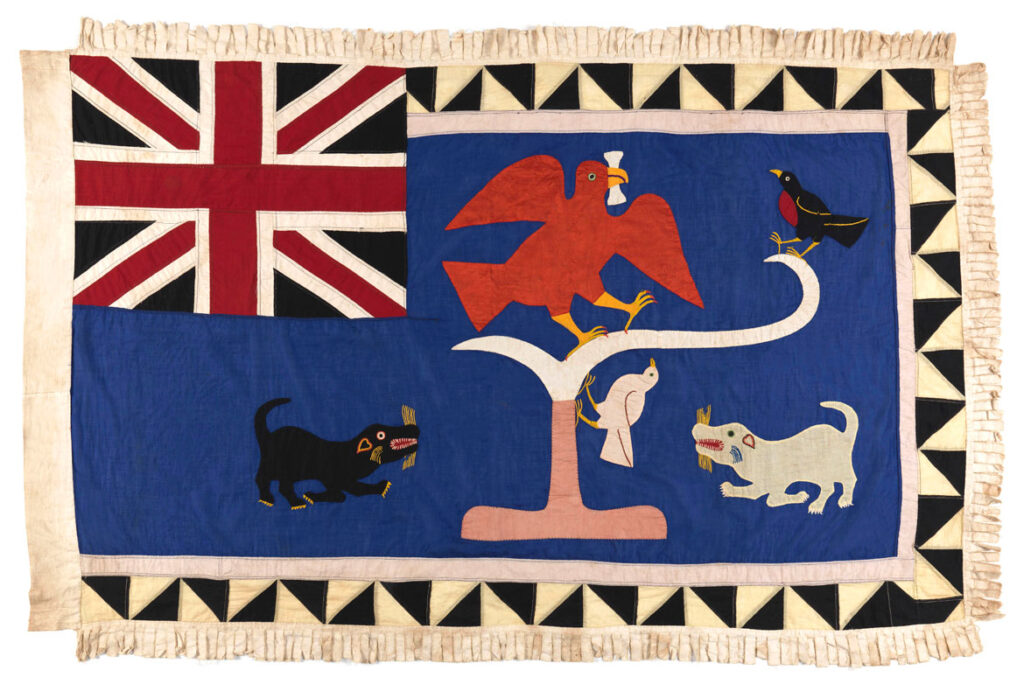
In this flag, the eagle with a bone in its beak references sayings related to territorial disputes and issues related to the ownership of places and things, including the motifs on flags and posuban. The specific saying is,
“If the Eagle gets the bone, it is for nothing. It belongs to the dog.” The eagle may take the bone, as another company may take a motif, but it will always belong to the original owner.
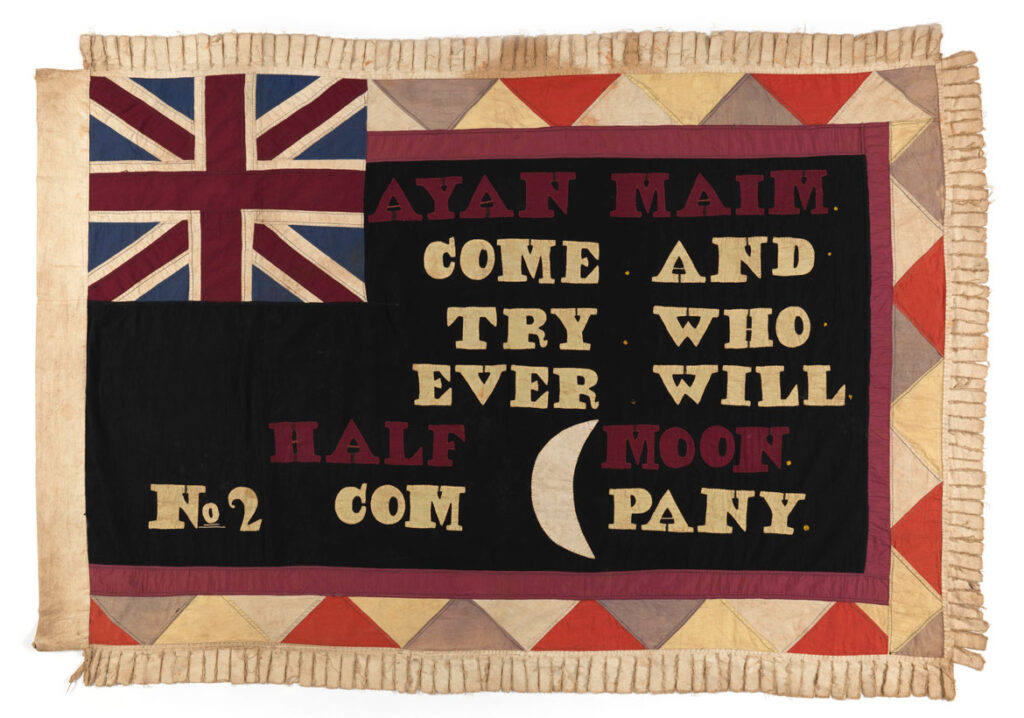
Eschewing any figurative motifs, this flag focuses on text, which reads in part, “Come and try who ever will,” echoing the common challenge “come and try” that is frequently issued by companies to their rivals.
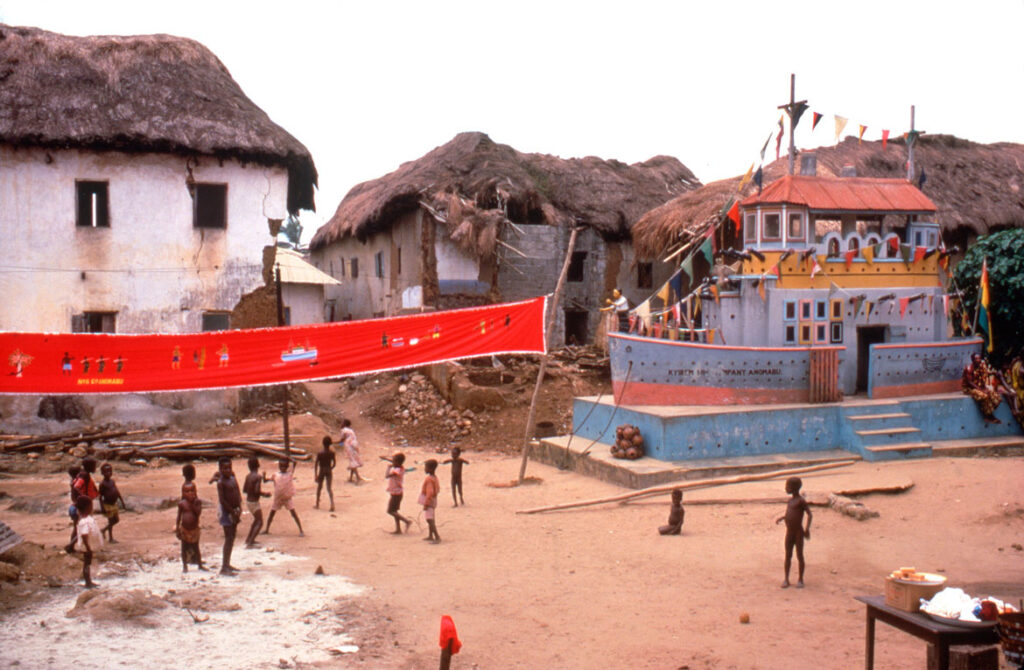
The one-hundred-foot banner on view at the Fowler was made in 1952 and used for eighteen years. Over that period, it was a source of local conflict: No. 5 Company claimed that the marron back- ground of the flag was their color, whereas the proper color for No. 6 Company was “bright red.” In 1970, the regional commissioner ruled that No. 6 was prohibited from using the darker background, and the company commissioned a duplicate banner by Kwamina Amoaku with all the same motifs on a bright red background. To finance the replacement (pictured at left), No. 6 sold the marron banner flag (on view in the gallery) to the Fowler.
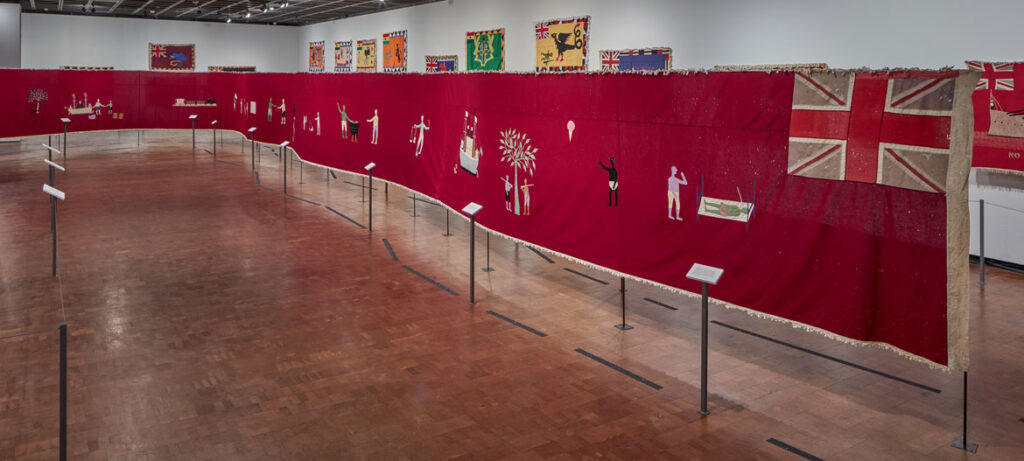

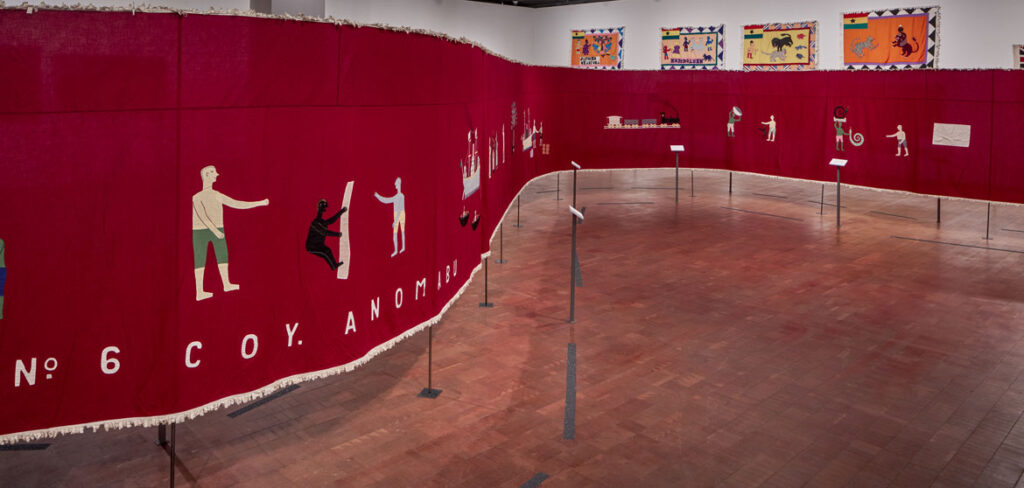

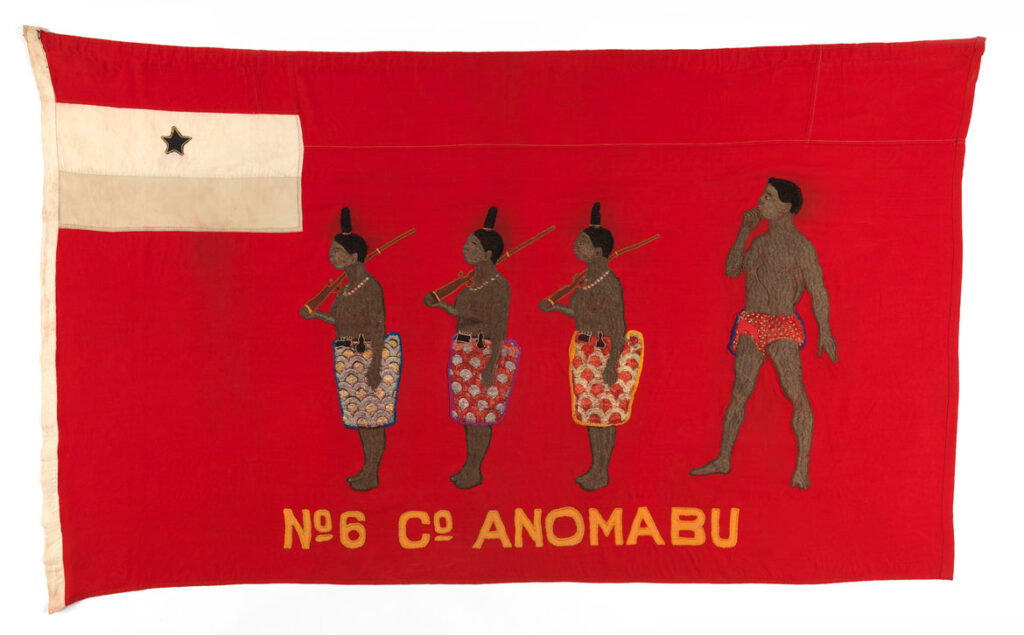
On certain flags the company celebrated the valor or skill of its women as a way to underscore the even greater ability of its men. A procession of women with guns follows the orders of a man on this flag, illustrating the saying, “If our women are strong, what will our men do?” The implication
is that the women of this company are strong enough to overtake the men of other companies.
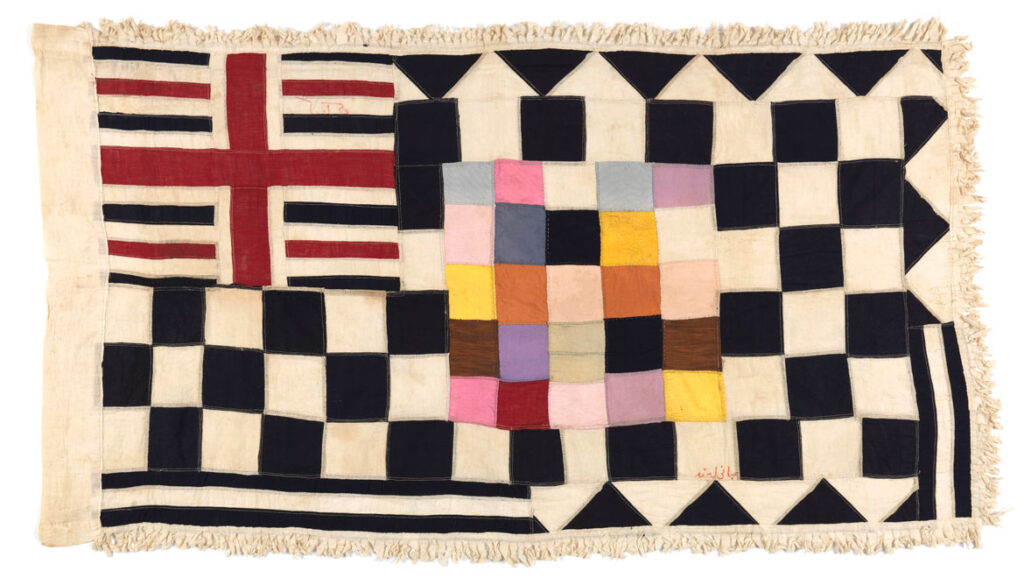
Draughts, called damii in the Fante language, is a common game and a frequent motif on flags. As with other competitive games, draughts is a metaphor for war and suggests a company’s readiness to engage the enemy in a “war” of draughts at any time.

